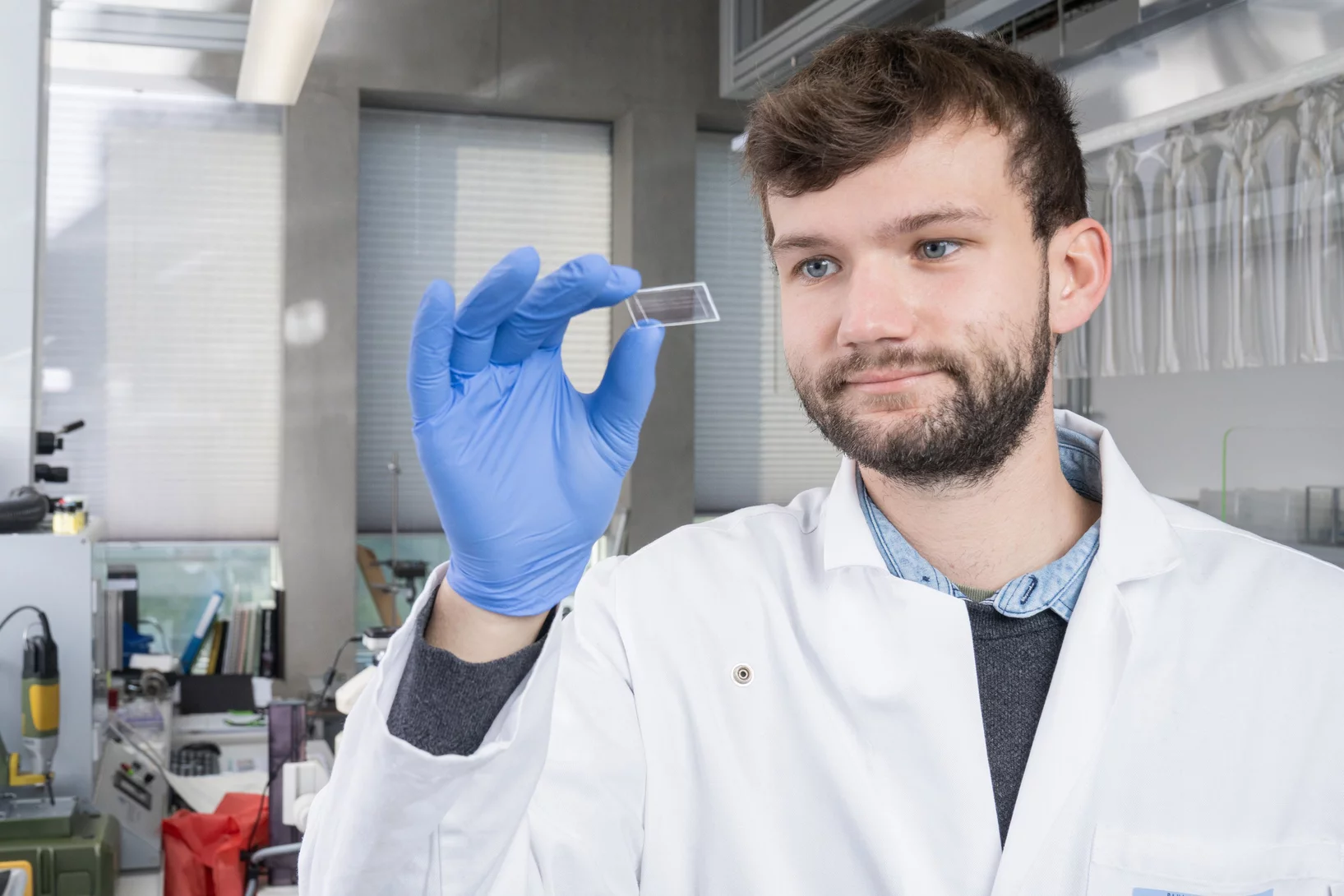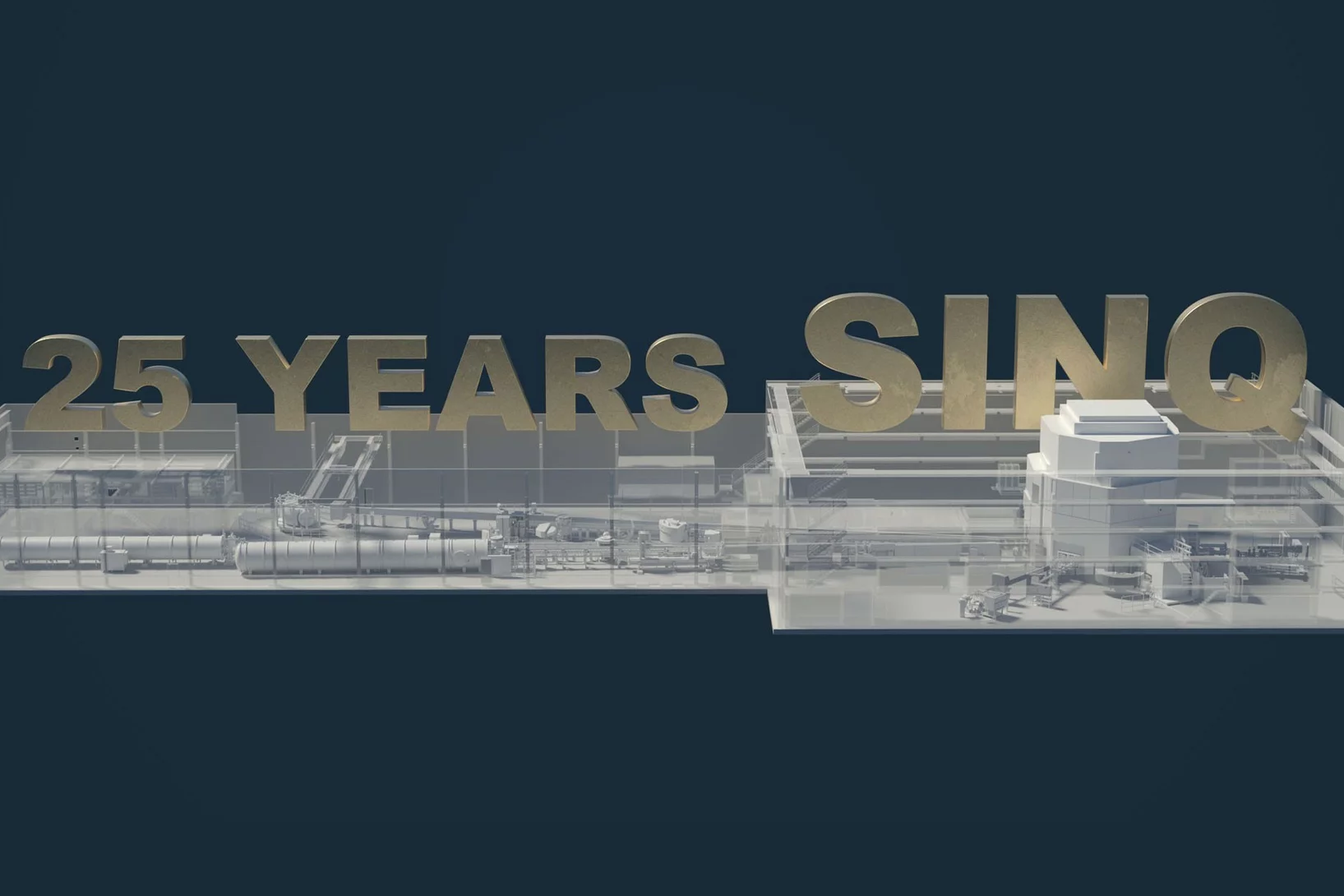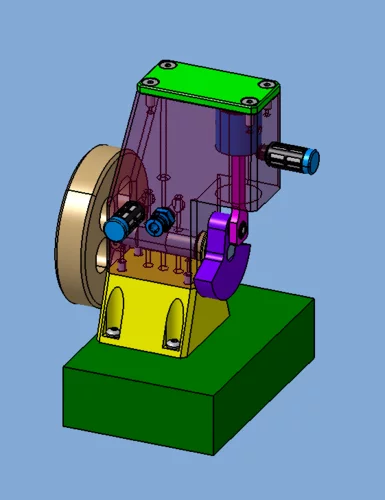Am PSI widmen sich mehrere Projekte wichtigen Forschungsfragen rund um das Coronavirus Sars-CoV-2 und den daraus resultierenden Erkrankungen. Wir informieren über Aktivitäten und Vorhaben, zum Beispiel zu Untersuchungen von Lungengewebe, zur Produktion von Proteinen und Antikörpern oder über Ideen für neue Forschung zu Covid-19.
Nützliche Links
Muon spin spectroscopy
Muons are particles with a spin of 1⁄2 that can be implanted into a wide range of condensed matter materials to act as a local probe of the surrounding atomic environment. Measurement of the muon’s precession and relaxation provides an insight into how it interacts with its local environment. From this, unique information is obtained about the static and dynamic properties of the material of interest ...
Covid-19: Neuer Covid-Schnelltest
Forschende des Paul Scherrer Instituts PSI und der Universität Basel haben einen Covid-19-Schnelltest entwickelt. Sein neuartiges Funktionsprinzip verspricht zuverlässige und quantifizierbare Aussagen über die Covid-19-Erkrankung eines Patienten und deren Verlauf – sowie Aussagen zu möglichen anderen Erkrankungen und Covid-Varianten.
Der neue vom PSI entwickelte Test, der anders als Antigen-Tests nicht direkt Bestandteile des Virus nachweist, sondern die Antikörper, die das Immunsystem als Reaktion auf die Infektion produziert, verspricht nun erheblich mehr Aussagekraft. Er ist genauso günstig, schnell und einfach zu handhaben, zudem lassen sich mit ihm verschiedene Erreger gleichzeitig identifizieren – etwa die der Grippe.
Bis er zum Einsatz kommen kann, muss er allerdings noch weiter getestet und optimiert werden.
EU XFEL Young Scientist Award for Camila Bacellar
Camila Bacellar, beamline scientist and group leader of the Alvra endstation at SwissFEL, has received the European XFEL Young Scientist Award. The award recognises the contribution of young scientists to research at the European XFEL.
Taking good and safe care of the retired … nuclear fuel
After several years of loyal and reliable services during heavy duty operation in a reactor, nuclear fuel must be discharged and go into retirement. For Switzerland, the final place of retirement is planned to consist of a deep geological repository where the used nuclear fuel will be disposed. Before the repository is constructed, the used fuel will need to be stored in wet pools and/or dry storage casks.
During all this time, safe handling of the fuel will remain the top priority for operators and regulators. To gain better knowledge on the relevant phenomena which could potentially affect the fuel thermo-mechanics and safety characteristics during long storage periods as well as to allow predicting their evolution, simulation models are being developed at PSI within the DRYstars project.
A first milestone was recently achieved with the development of models coupled to state-of-the-art fuel performance codes for each of the three main categories of phenomena considered as having high safety relevance for storage, namely helium behaviour, creep behaviour and hydrogen behaviour.
Neuer, besserer Corona-Virus-Schnelltest
Der Test erkennt verschiedene Virus-Varianten und verbessert die Krankheitsprognose.
Mit Topologie zu kompakteren Quantencomputern
Auf dem Weg zu besonders stabilen Quantenbits haben Forschende die Elektronenverteilung in zwei Halbleitern genau untersucht.
Update on the Status of HIMB
A workshop to discuss and further develop the science case for the High Intensity Muon Beams (HIMB) has been held.
Direct observation of crack formation mechanisms with operando Laser Powder Bed Fusion X-ray radiography
Operando high-speed X-ray radiography experiments reveal the cracking mechanism during 3D laser printing of a Ni superalloy.
Celebrating 25 years of SINQ
On January 17th, 2022, we celebrated the 25th anniversary of the inauguration of the Swiss Spallation Neutron Source SINQ. Today, SINQ is firmly embedded in the European research landscape and has established itself as an important center for neutron research.
Druckluftmotor: aus nichts als Luft wird kinetische Bewegungsenergie
Am Anfang nur eine einfache Übungsvorlage aus dem Internet, inzwischen eine detaillierte Baugruppe die in der Pandemie seinen Start fand. Nun warten wir bis es in der der Fertigung realisiert wird.
Direct evidence of in situ Co-oxyhydroxide formation on the surface of La0.2Sr0.8CoO3-δ water splitting catalyst
We carried out in situ and ex situ ambient pressure X-ray photoelectron spectroscopy (APXPS) experiments on a La0.2Sr0.8CoO3-δ perovskite oxygen evolution reaction (OER) catalyst. The study shows that Sr is leached into the electrolyte after immersion, leading to surface Co active site enrichment. Such a Co-enriched surface evolves into a new phase during operation. With the help of theoretical simulations, such a species is assigned to Co-oxyhydroxide, providing direct evidence of its formation during the OER.
Revealing invisible defects in fusion reactor armor
In an exciting collaboration, Nick Phillips, a PSI Fellow at the cSAXS beamline, reveals nanoscale lattice distortions created by invisible defects in fusion reactor armor. This work develops the current understanding of how the smallest, but most prevalent defects, generated during neutron irradiation behave. The novel Bragg ptychographic approach published in Nature Communications paves the way for fast, robust, 3D Bragg ptychography.
E-fuels and electrification as complementary approaches to achieve climate target
Sustainable, synthetic fuels, so-called e-fuels, can help reduce CO₂ emissions. For their production, electricity from renewable sources is required in order to allow for a close to CO₂-neutral balance. The availability of electricity from renewable sources, which ensures the climate benefits of e-fuels, is currently still limited. “Especially in order to produce on a larger scale, a lot of renewable electricity is needed,” explains Christian Bauer, researcher at the Laboratory for Energy Systems Analysis (LEA) at PSI.
SμS Call 2022/1 informations
The results of the evaluation of the SμS Call 2022/1 and the beam time schedule will be published mid of March 2022. Resume of HIPA user operation is scheduled to May 2nd, 2022.
Understanding variant selection and texture in additively manufactured red-gold alloys
Synchrotron X-ray diffraction experiments reveal the presence of a non- negligible amount of tetragonal phase in 3D printed red-gold samples.
Millionenförderung für Hirn- und Quantenforschung
Der Europäische Forschungsrat bewilligt PSI-Projekte zur Entwicklung eines Quantencomputers und zur Hirnforschung in Höhe von 5 Millionen Euro.
Forschung für die Halbleiterelektronik
Forschende des PSI haben zusammen mit Forschenden der der Universität Cornell im US-Bundesstaat New York haben ein Verbundmaterial identifiziert, das Quantenbauelemente in die Halbleitertechnologie integrieren und damit elektronische Bauteile deutlich leistungsstärker machen könnte. Zu den derzeit wichtigsten Herausforderungen in der Halbleiterelektronik gehören Verbesserungen, die die Bandbreite der Datenübertragung, die Energieeffizienz und die Informationssicherheit erhöhen würden. Die Einbeziehung von Quanteneffekten könnte für einen neuen Durchbruch sorgen und richtungsweisend für die Halbleiterindustrie sein.
Confirming the trilinear form of the optical magnetoelectric effect in the polar honeycomb antiferromagnet Co2Mo3O8
Magnetoelectric phenomena are intimately linked to relativistic effects and also require the material to break spatial inversion symmetry and time-reversal invariance. Magnetoelectric coupling can substantially affect light–matter interaction and lead to non-reciprocal light propagation. Here, we confirm on a fully experimental basis, without invoking either symmetry-based or material-specific assumptions, that the optical magnetoelectric effect in materials with non-parallel magnetization (M) and electric polarization (P) generates a trilinear term in the refractive index...
LAC scientists awarded Mariolopoulos Trust Fund Award 2022
The paper "Sources of particulate-matter air pollution and its oxidative potential in Europe" published in Nature by Kaspar Dällenbach and his team at the LAC has won the 2022 Mariolopoulos Trust Fund Award, along with another paper in the field of atmospheric environment.
Precision Measurement of the Lamb Shift in Muonium
We report a new measurement of the n=2 Lamb shift in Muonium. Our result of 1047.2(2.3)stat(1.1)syst MHz comprises an order of magnitude improvement upon the previous best measurement. This value matches ...
Mehr Einblick in den Sehsinn
PSI-Forschende haben die Struktur eines wichtigen Bestandteils im Auge aufgeklärt: Der Ionenkanal CNG sorgt dafür, dass das Sehsignal ins Gehirn weitergeleitet werden kann.
Marie-Christine Zdora joins the X-ray Tomography Group
The X-ray Tomography group welcomes Marie-Christine Zdora as a new member. In her role as translational X-ray imaging adjunct scientist, Marie will mainly work on phase-contrast and dark-field imaging focusing on the further development of these techniques towards their clinical translation. Before joining TOMCAT, Marie was a postdoc in the X-ray optics and applications group at the Laboratory for Micro- and Nanotechnology (LMN) at PSI, where she worked on the development of new X-ray optics as well as X-ray wavefront sensing. Prior to this position, she was a research fellow at the University of Southampton in the UK, where she made advances in X-ray speckle-based imaging using synchrotron and lab sources.
Reduced capacity PSI guesthouse
There will be some substantial renovation work be going on in the PSI guesthouse until middle of March, which causes a significantly smaller capacity mainly in January and February.
Welcome Fabio Peixoto Esteves
A new colleague, Mr. Fabio Peixoto, started on January 1, 2022 as a PhD student in the van Bokhoven group under Marco Ranocchiari's supervision.
Was Protonen möglich machen
Diese Galerie stellt fünf Personen vor, die am Zentrum für Protonentherapie des PSI behandelt wurden.
High-performance detector for DMC enters hot commissioning phase
The cold neutron diffractometer DMC at SINQ is currently undergoing major upgrades. After the recent replacement of the cold neutron guide as part of the SINQ upgrade program, the installation of the new high-performance 2D position-sensitive detector successfully entered the hot commissioning phase.
Halbleiter erreichen die Quantenwelt
Mit einem Supraleiter aufgemotzt: Die Halbleitertechnologie könnte eine neue Wendung erhalten, indem Quanteneffekte in Supraleitern ausgenutzt werden.
Effektiv kombinierte Tumortherapie
Forschende des Paul Scherrer Instituts PSI haben verschiedene Verfahren zur Bekämpfung bestimmter Krebsarten auf ihre Effektivität überprüft. Die Kombination aus zwei Präparaten zeigte dabei eine deutlich bessere Wirkung als die Behandlung mit nur einem der beiden Wirkstoffe. Vor allem für die Behandulng von modulären Schilddrüsenkarzinome ist dies von Bedeutung. Wenn sich die bisherigen Ergebnisse in zukünftigen Studien bestätigen, könnte diese Therapie in einigen Jahren der Allgemeinheit zur Verfügung stehen.
3D printed nanomagnets unveil a world of patterns in the magnetic field
Scientists have used state-of-the-art 3D printing and microscopy to provide a new glimpse of what happens when taking magnets to three-dimensions on the nanoscale – 1000 times smaller than a human hair.
Terbium Triumph
Bench-to-bedside successes: Fruitful collaborations at PSI’s Center for Radiopharmaceutical Sciences make bringing Terbium-161 to the clinic a reality.


























